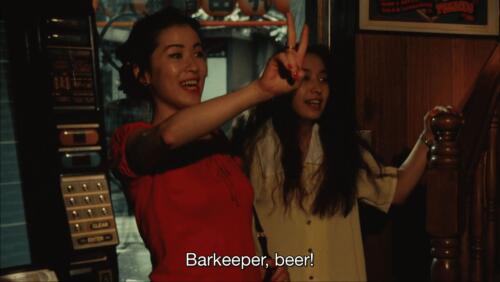
Dear sexy reader, A New Love in Tokyo
Did you miss me? I know you’ve been waiting with bated breath for my latest review.
So, at long last, here is the second installment of my SW in Film series! Ta-da! Quick backstory: I actually haven’t watched many films about SW. So, when I decided to tackle that, I thought, Why not write about it? So here we are, with volume 2! For your viewing pleasure, allow me to introduce A New Love in Tokyo.
Early disclosure: I adore this film! Japanese director Banmei Takahashi’s cinematic vision captures an early Heisei-era Tokyo (early ’90s) where sex is messy, hilarious, and free from moralization. A comedy-fantasy, play within a play, that darkly straddles the line between art and porn? Yes, please!
The obviously polarizing aspects of the film include rampant sex, nudity, and shocking (consensual) violence. What’s more, it’s about SWers just living their lives as the complete humans they are…without getting moralized! That last part is extremely refreshing to me. A New Love in Tokyo contains all the flights of fancy and runaway whimsy of a Don Quixote adventure. Only this time, the brutal clutches of reality never catch us in the end.
The story originates from a photo book by essayist Kei Shimamoto and photographer Nobuyoshi Araki of the same title. The book’s title is also identical to that of a book by Charles Fourier, philosopher and founder of “utopian socialism.” Le Nouveau Monde Amoureux (1816) puts forth Fourier’s utopian vision where:
all human passions, including love, are allowed to be freely expressed to achieve social harmony and universal ‘unityism’
Charles Fourier, Le Nouveau Monde Amoureux
Now… Fourier is actually credited as coining the word “feminism” in 1837, but he was also a proto-nazi. He’s all over the place, that guy! I can’t find any quotations supporting the notion that the movie is directly influenced by Fourier’s book, but… I’d put my money on it. Takahashi wisely cherry-picks the speculative core of Fourier’s work for A New Love in Tokyo‘s guiding philosophy. Which is: Wouldn’t it be nice if women could actually be free sexually — free from judgment? He then quietly discards Fourier’s authoritarian tendencies and pseudo-scientific theories. For example, his grand pronouncement that the seas will all eventually turn to lemonade. Good call on that, Takahashi.
Fair warning to the squeamish and the traumatized: although this is a feature film, it has major elements of a Japanese pink film. Some of the sexual situations are pretty dark and could easily be triggering for some, especially for SWers. However, I believe all the sex and some of the violence is merely simulated. And I enjoyed it, so I’m sure some of you will, too.
The film also brags the baffling distinction of being the first Japanese film with uncensored pubic hair in Japan’s domestic market. Sexually, it caters fully to the male gaze, with wild theatrics meant to titillate men. Still, I consider its cultural context, lighthearted absurdist tone, and the soaring self-confidence of the two female leads. As a woman, I fully enjoyed this utter gas of a movie with its surprisingly humanistic core.
The Japanese title of A New Love in Tokyo, 愛の新世界, literally means, “A New World of Love.” This “new world” is BDSM, but it’s also freedom and connection. It’s the kind of film that sneaks up on you with its charm, wit, and glowing humanity. Instead of a run-of-the-mill grim exposé about SW in Tokyo, it’s surprisingly poignant, though still very goofy. Takahashi renders a portrait of two young women unapologetically living the sexual lives they choose. They also both have warm and caring support networks that accept them as they are.
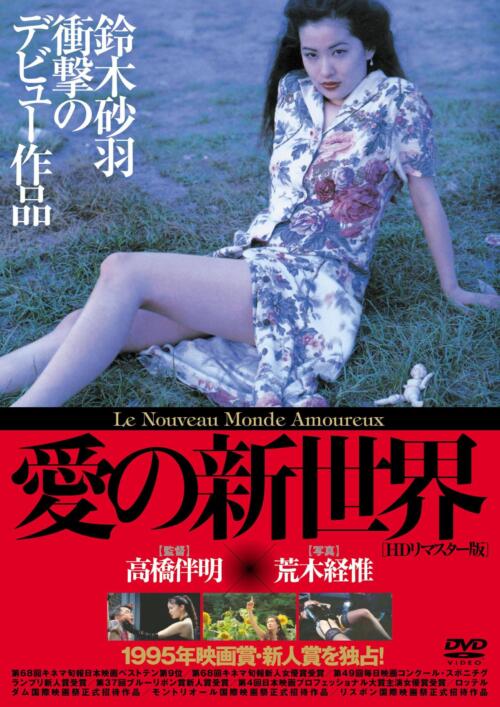
The Characters of A New Love in Tokyo: Spirited, Sharp, & Full of Life
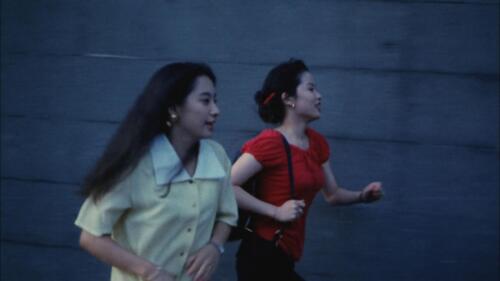
Where many films about “erotic labor” dwell in the shadows, A New Love in Tokyo steps boldly into the light. Ayumi, a call girl, and Rei, a dominatrix — both around 20 years old — are vivid and real. Their friendship is characterized by knowing smiles, daring banter, and bursts of laughter. What struck me most was their vivacity. These are women who refuse to be reduced to their jobs. Rei and Ayumi are funny, resilient, and self-aware. They have personal histories, dreams, agency, and boundaries (that they damn well enforce). They also display emotional development over the story arc (gasp! where are my clutching pearls?!). The ample theatrics and slapstick humor in this film don’t represent actual day-to-day SW life. However, the quieter in-between moments, where Rei and Ayumi’s friendship deepens, are moving and relatable.
I don’t want anyone to think I see their lives as glamorous or aspirational, though. Both apparently started doing SW as soon as they were 20, if not sooner… (20 is the age of adulthood in Japan). Ayumi goes through the typical trials and tribulations of a call girl. She entertains clients who are manipulative and thieving, has to hide her work from those she loves, and more. And Rei is incapable of developing feelings for the young men she dates in her personal life. So she clearly has some issues. We also see intermittent photo flashbacks to what looks to be a childhood spent in poverty. But these two women never lose their joie de vivre, and the very real friendships in their lives reign supreme. In a certain light, they could even be viewed as embodying a Buddha-like detachment and acceptance of life…
Or, maybe, they’re just really good at acting un-bothered, because the male director preferred that. To-may-to, to-mah-to. As an aside, I looked up info on Takahashi but didn’t find many juicy details. I could only ascertain that he’s quite demanding on set. The impression I got was that of someone who routinely pushes boundaries, but not to a criminal extent. So, basically, probably not someone I’d like to know. But perhaps the right person to make an incredible movie with actors who know and accept what they’re in for.
At any rate, A New Love in Tokyo is open to interpretation.
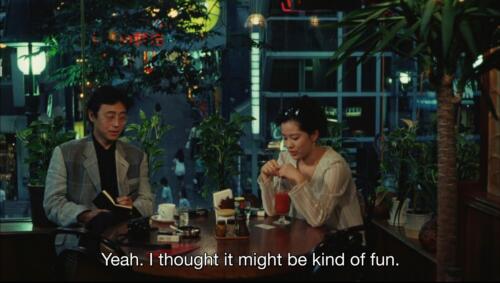
Rei
We learn that Rei (Sawa Suzuki) got into being a dominatrix because she “thought it would be fun.” She simply answered an ad, interviewed, and started out immediately as a dominatrix. As SW goes, this is something akin to jumping into being a Michelin-star chef upon learning cooking basics. It’s not very believable at all (to me, who has never worked in the kinkier side of SW). Master dominatrices possess complex emotional and physical skill sets that really can’t be mastered overnight. Only — that doesn’t matter, because Suzuki was simply, divinely, born for this role. Her seemingly natural talents in the realm of sadism are so cinematic, so fluid, and so…charming. I immediately and completely surrendered my disbelief, with pleasure.
It doesn’t matter if Rei is believable, because she makes me want to believe in her.
After each evening of dominating clients and partying at clubs til dawn, Rei takes the Yamanote Line north to Ikebukuro. And then…she keeps going(!), on one of the older, dustier, local trains. All the way up to Saitama, which, translated into English, is essentially Bum-Fuck-Nowhere-Next-to-Tokyo. I was surprised to realize she is commuting about an hour out to the sticks. This environmental contrast between her work life and private life emphasizes the fact that she contains multitudes.
At home, we see Rei as calm and grounded, though a bit feral and even somewhat zen. This is in stark contrast to her persona in the neon-cast, ephemeral floating world of Shibuya. Contentment and happiness are attributes typically not afforded to SWers in film, and it’s a beautiful thing to behold. Ayumi, on the other hand, lives not far from Shibuya in central Tokyo. Rei can also afford a Tokyo apartment, so it’s her love of nature that keeps her in the suburbs. However, I would be remiss not to mention that this dichotomy is also a classic sexist film trope: the “Edenic Woman.” This is when a sexy woman is portrayed as intellectually uncomplicated, and also untamed and spontaneous like a wild animal. I acknowledge this, but am able to look past it in this instance because Suzuki fucking owns the trope like it’s her little bitch.
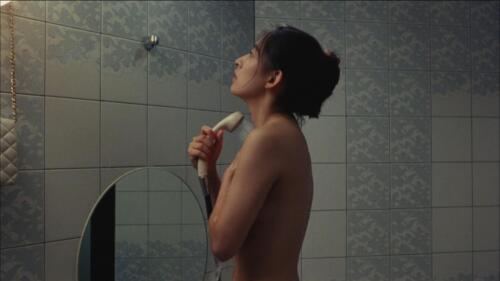
Ayumi
Ayumi (Reiko Kataoka), in contrast to Rei’s fierce professional persona, comes across as a relatively unassuming call girl. She works out of a tiny agency space, that takes on many names depending on advertising needs. The agency dispatches her to clients in nearby love hotels. These clients obscure their real identities with common surnames such as Sato, Takahashi, Yamada, and so on — similar to the “John”s, “Steve”s, and “Mike”s of unscreened-client America. Unfortunately, these clients we see of hers are either selfish idiots or outright insane.
Go figure — this is what happens when escorts can’t screen clients.
So, Ayumi copes by dissociating.
In her personal life, she dates an “egg-doctor” (not yet in med school but aspires to be a doctor). She desperately wants to marry a man of status, but it doesn’t seem to be in the cards. Her boyfriends tend to be fun-employed simpletons, milking her for her kindness and hard-earned money. Oh, Ayumi. Still, we see emotional development over the course of the story, as well as some lingering follies.
When Ayumi spends time with Rei, she becomes the mischievous, pistol-quick bad-ass she really is. She knows that she is much smarter and more driven than her loser boyfriends. But at least when it comes to her friendships, she doesn’t have to settle. The result is a rather sprightly symbiosis.
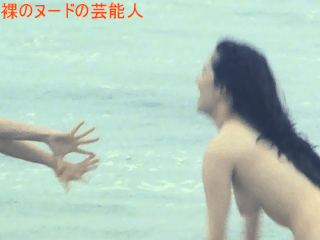
A Whore New World…
Cinematography and Mood in A New Love in Tokyo: A Love Letter to Tokyo
Visually, A New Love in Tokyo is a marvel. The cinematography is lush and moody without being heavy-handed. Every frame hums with color and appropriate lighting. Rain glitters on pavement; bar lights envelope patrons in a pinkish haze. The clean geometry of postmodern interior design evokes that pervasive sense of mysterious optimism particular to the early ’90s. There’s a playfulness in how Takahashi’s camera lingers within scenes: it’s intimate but not overly voyeuristic. The film captures Tokyo as a playground of contradictions: bright, lonely, funny, erotic, alive.
Maruyamacho (a.k.a. Love Hotel Hill) in Shibuya has a long history as a red-light district. It boasted many geisha houses back in the 1800s (which I’m sure Fourier would have loved). And yes, the mizu shōbai is still thriving there. That’s Japanese for “water trade,” slang for the adult/entertainment industry in Japan. I found myself pausing the movie during street scenes, and checking some of the businesses on Google Maps. Many of those seedy motels seen in the film still exist, 30 years later!
If you’ve ever clubbed all night in Shibuya and waited for hours for the first train home, you’ll feel nostalgia. Our characters, with their early-90’s hairstyles and clothes, stumble, exhausted, in the bracing bloom of dawn. They traipse down Center-gai and its labyrinthine offshoots. Next, they round the corner past a bunch of now-closed shops carrying hiphop clothing designs and jewelry. Nearby, they hear the beckoning sounds of the slowly re-animating station building. The sun still isn’t visible – just grey air blending into greyer concrete. Should they get ramen, the ultimate Japanese hangover food? Or maybe some hair of the dog? This journey is a rite of passage shared by people of every class and background in Tokyo, at some point.
Interspersed with the video shots are masterful photos by the infamous photographer Nobuyoshi Araki. Araki also has a cameo in the film (he resembles a gnome on coke here). Araki is the most widely-recognized and controversial photographer in Japan, and that’s saying a lot. He was Me-Too’ed eventually by a model, but for decades, he’s been considered one of Japan’s most captivating photographers. I once attended an exhibition of his work (before the accusations) in Omotesando, Tokyo. I had to admit that some of his photos were incredibly magnetic. Still, overall, I left with the sense that I’d definitely never want to be alone with him. Just by looking at the models and poses, I got some pretty bad vibes, and I’m no prude. Separate the art from the artist? You decide.
In the photo-shoot sequence, Araki’s photos are crass representations of female anatomy (e.g., wrinkly octopus flesh, a bushy weed, etc.). Rei is oblivious, giving zero fucks. She’s like a punk rock angel in her black vinyl teddy, stockings, and stiletto heels.
Her acting strength, to me, carries the movie safely away from exploitation territory, into a fiery transcendence of female power.
That scene alone really begs a deeper analysis. All this wild footage (vaguely reminiscent of a Buñuel surrealist film) rolls to a voice-over of Rei taunting her clients. Araki jumps around and cheers Rei on like a horny Rumpelstiltzkin who speaks half in English slang loan-words. It’s a spectacle.

Humor: A Soft Rebellion
What I didn’t expect — and what I loved most about A New Love in Tokyo — is how funny it is. Not broad comedy, but a light, knowing humor that undercuts the usual solemnity of “serious” films about women’s bodies. Ayumi’s conversations with clients often slide into absurdity; Rei’s dominatrix sessions are theatrical farce as much as performance art. The laughter feels like rebellion — a reminder that joy itself can be a form of resistance.
Although she genuinely seems to enjoy her job, Rei’s passion in life is acting. She’s a member of a small troupe of young actors, all of whom she is fucking. She has them on a daily rotation — one per day. They all know the drill, and talk about it openly, the same as they would talk about dinner plans. In an interesting twist, Rei never has sex with her work clients. She also has many boyfriends, whom she really only keeps around in order to receive regular “birthday” presents. She has decided on 4 birthdays per year, but keeps forgetting when they are. One of the most hilarious scenes is when she uses one of these birthday presents rather creatively with a client.
We also are privy to Ayumi’s sense of humor, largely through voice-overs indicating her true thoughts on men. Besides the two main characters, there are also a slew of minor characters, all funny in their own way.
Tone and Heart: A Celebration of Freedom
This isn’t a story of “fallen women” seeking redemption. It’s about choosing one’s own script in a society that wants to write it for you. Even when melancholy seeps in, the film stays light on its feet. There’s tenderness, but no self-pity.
The first S&M scene quixotically juxtaposes whipping and boot-licking, with heartwarming, innocent-sounding flute music. We as the audience are invited to leave all seriousness behind. Both the Jō-sama (queen/dominatrix) and her sub bask in the glory of playing their roles well. It’s a scene of raw desire, and perfect fulfillment via deprivation and punishment.
Towards the end of the movie, we witness a couple of happy, idyllic scenes in natural surroundings. Is the director objectifying the naked young women? Well…absolutely, yeah. But it also makes sense in the narrative context, and the acting makes it believable.
Realism: Fairly Spot On
Are you ready for it? Are you reallllly ready?
Revelation: I cut my teeth in Tokyo. As an escort, that is.
I can personally vouch for much of the ephemera, some of the client-provider interactions, and daily life portrayals being pretty authentic. I felt seen in many ways when I watched this film (says the redhead). Shibuya used to be my playground, and I know Maruyamachō quite intimately. If you want to know more about that experience of mine, you’ll have to book me. I recommend a longer booking, as I have many stories to tell… But yes, aside from the jokes and melodramatic bits, this is pretty much what it’s like to work in Shibuya, even now.
A note about rates: Ayumi (as a call girl) makes ¥25,000 for 1 shot (means until the client comes once). ¥25,000 in 1994 is roughly equivalent to ¥29,000 in today’s yen (Japan has had barely any cumulative inflation since the ’90s). That’s $192 in USD. As of today, the average escort rate in Tokyo is actually about ¥40,000, or $265. I’m not equipped to explain this price evolution, or compare the relative purchasing powers, because there are so many factors involved, and I’m not an economist. But I thought I would share that info, for those unaccustomed to the Japanese yen currency.
Speaking of money…some other things also haven’t changed much (whomp whomp):
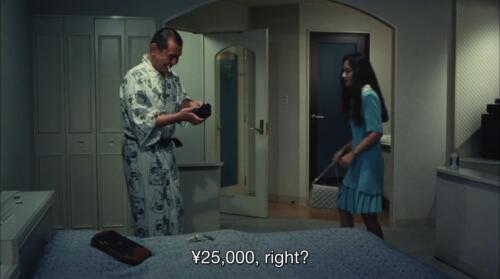
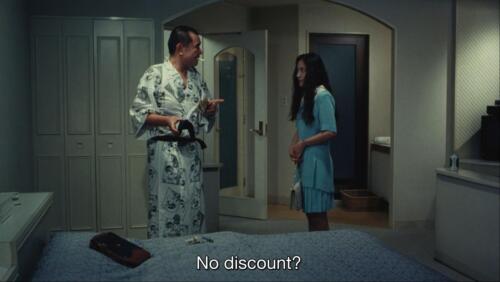
I have never worked as a dominatrix, so I can’t attest to how realistic the dungeon scenes are. If anyone else has seen this and has experience with that, let me know in a social media comment! I was quite intrigued by the scene where Rei “breaks in” a new submissive who isn’t taking it seriously enough. I’m not sure how realistic it is, but it felt eye-opening nonetheless.
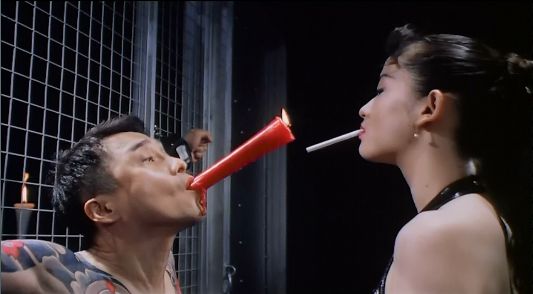
Takeaways from A New Love in Tokyo
I would love to live in a world where a slut can slut around, without anyone batting an eyelash. Wouldn’t that be nice? Of course, that’s not the case, though, so this movie allows me to live out that fantasy. It also goes to show that even far-out kooks like Charles Fourier can harbor some rather compelling convictions.
Speaking of convictions… Although I enjoyed the film, after the end credits finished scrolling, I felt something nagging at me. How did the film’s star feel about the movie in retrospect? I tried to dig a bit online, wondering how Sawa Suzuki (Rei) remembers the film and its process. Born in 1972, she is now middle-aged (and still insanely gorgeous). She regularly posts on Instagram about her life, work, celebrity appearances, and brand sponsorships. Regarding A New Love in Tokyo, Suzuki has said it was a challenging debut (in a positive way). She also says that she was absolutely fearless (and also naive, being only 20 years old while filming). Because of this, she felt free to approach the character of Rei with a purely artistic mindset. When recounting those days, she said,
“I didn’t even understand what nervousness was like,”
“I was bold because I was ignorant [in the blank slate sense],” and
“It’s only natural that I wouldn’t understand [such a complex sexual construct], so I’ll just go for it.”
I think this comes across in the film — she plays Rei so convincingly. This naive drive to experiment allowed the character of Rei, however implausible, to come to life.
In my digging, I also did not find anything explicitly about any abuse taking place on set during filming. Suzuki has even spoken positively about her time as Araki’s model in both the movie and the photo book. However, we also must keep in mind that speaking out about anything could have ended her career…
I think the question of whether erotic film actors are being mistreated is an incredibly important one to consider. We can never truly know the answer in most cases, but our responsibility as consumers demands that we at least have the heart and courage to ask.
Suzuki won several awards for her performance, and has stated that this movie was a good start for her career. I’m missing a lot of information, since I couldn’t find much online. But I’m quite happy to see that she wasn’t simply dismissed by critics as a tasteless porn star. Now, after playing more than 100 film and TV roles, she’s still thriving in her middle age. Damn straight.
More generally, I thoroughly enjoyed the visual tapestry of late Showa/early Heisei-era aesthetics, the ’90s culture, the soundtrack, and more. There’s a ton of interesting points I haven’t even mentioned! But in the interest of time and mystery, I’ll leave it to the more tenacious cinephiles among you to track this gem down and let A New Love wash over you.
That’s all, folks! Have you seen A New Love in Tokyo? It’s a difficult one to find for English speakers, although I’m fairly sure you can access it via Mubi with subtitles. If you’re searching in…other…channels, be careful not to accidentally watch Tokyo Decadence, which is sometimes mislabeled as A New Love in Tokyo. This is because, in the ’90s, English-language distributors marketed A New Love in Tokyo as Tokyo Decadence 2, just to make more sales. Ya know, because they’re both Japanese and about SWers, and they wanted to target a certain niche audience. I accidentally watched the first few minutes of Tokyo Decadence before I turned it off, bewildered and horrified. I’ll watch that movie another time, since it’s by the famed Ryu Murakami (and scored by Ryuichi Sakamoto!). But this time, I was expecting a comedy, and wasn’t prepared.
Let me know your thoughts on either my Bluesky or Twitter. If you enjoyed this review, why not send a little token of your appreciation via my wishlist? Or tell me so in person? A little shared fantasy could be just what we need…
Quixotically yours,
Annie